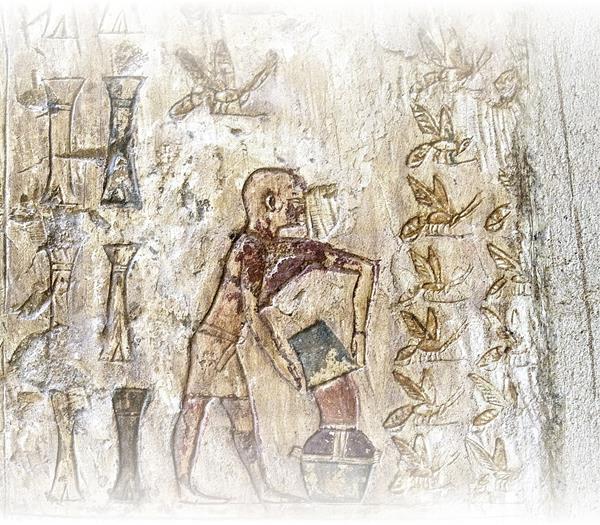
In the Bible, bees are portrayed as irritable and a symbol of pursuit—including of God’s people by God (Isaiah 7:18). Leviticus 11 considers the bee (deborah, in Hebrew) unclean, while honey (debash) is permitted—probably because biblical references to honey mostly concern a sweet syrup extracted from dates. The only explicit mention of bees’ honey in the Hebrew Bible is in Judges 14:8, where it refers to wild bees or a swarm. Accordingly, apiculture (or beekeeping) is not attested in the Bible (unlike foraging from wild bees), and the promises of “the land flowing with milk and honey” concern uncultivated land.
Yet in 2005, the only apiary ever excavated in the ancient Near East was found at Tel Rehov in the northern Jordan Valley.a Dating from around 900 B.C.E., the installation was arranged in three rows, each supposedly containing three tiers of clay cylinders, suggesting a large-scale production. Measuring 15 inches in diameter and 30 inches long, the cylinders had a removable lid on one end and a “flying hole” in the opposite, sealed one. Remains of bees were also found and identified as being native to Turkey.
The Hittites must have kept bees long before the mid-14th century B.C.E., when their laws included punishment for stealing bees or honey. Sumerian and Babylonian love poetry references honey often, but the first mention of apiculture in Mesopotamia doesn’t come before the early eighth century.
In Egypt, beekeeping is first attested in the 25th century B.C.E. The polychrome relief shown here is from the seventh-century tomb of Pabasa at Thebes. It depicts cylindrical hives and people tending the bees and extracting honey. Intriguingly, the throne name of Egyptian kings was preceded by the title njswt-bjtj, “he to whom the sedge and bee belong.” Because the sedge and bee are symbols of Upper and Lower Egypt, respectively, the title is usually translated as “King of Upper and Lower Egypt.”
Throughout the ancient world, honey (made by bees or from dates, figs, or grapes) was used as the principal sweetener. Ritual offerings of honey to various deities were common—but prohibited to the Israelites (Leviticus 2:11). Beeswax was useful in metallurgy, in casting by the lost-wax method. Honey and other bee products were employed in medicine for their antibacterial properties.
MLA Citation
Footnotes
1. Nava Panitz-Cohen, “To What God?” BAR, July/August 2008.

